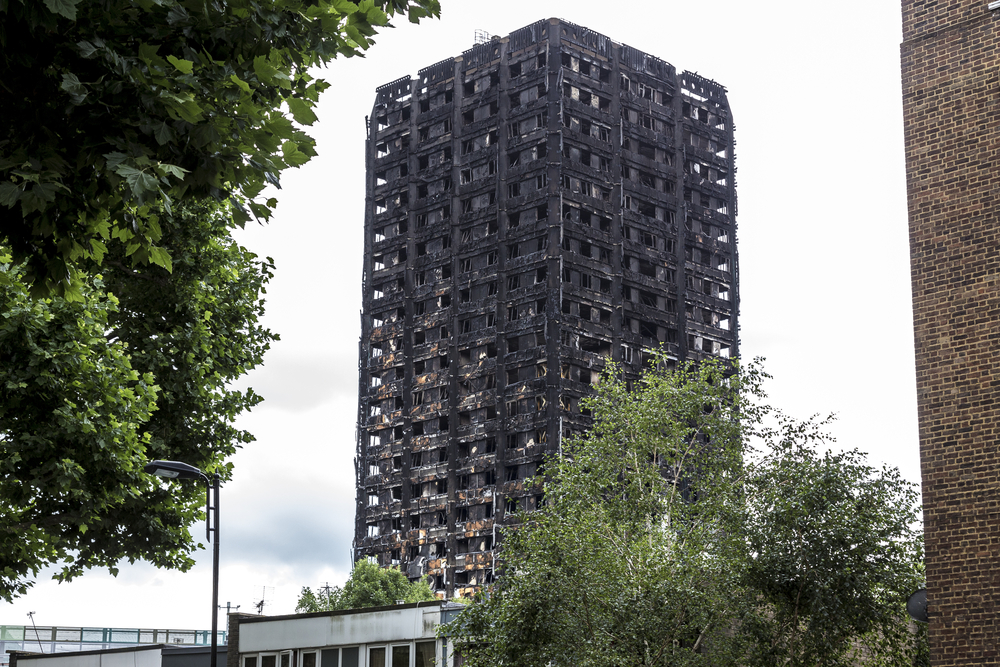

Flames reach several meters above test area in less than nine minutes after ignition
The first results have been released from new tests on the type of cladding system used on Grenfell Tower, where a devastating fire killed at least 70 people in June.
The current series of tests are looking at both cladding and insulation systems, assessing the fire safety of whole buildings.
The tests, carried out at Building Research Establishment (BRE), will allow experts to better understand how different types of Aluminium Composite Material (ACM) panels in combination with 2 different types of insulation behave in a fire.
This is the first test in a series looking at six combinations of cladding systems.
Each test involves building a 9-metre-high demonstration wall with a complete cladding system including cladding panels, insulation and cavity barriers. This is then subjected to a replica of a severe fire inside a flat as it spreads out of a window, to see whether it meets the requirement to resist vertical fire spread.
The first test was of a wall cladding system consisting of ACM with polyethylene filler (Category 3) and foam insulation, with fire breaks and cavity barriers in place.
In the findings on the government website it states: the expert panel advise that the results show this combination does not meet current building regulation guidance.
A break down of the results detail “sporadic flaming at the top of the rig” seven minutes and 15 seconds from point of ignition of the fire. At eight minutes 45 seconds, the report states the fire is “flaming several metres beyond the top of the rig.”
The Department for Communities and Local Government says 82 buildings are currently known to have this combination of materials in their wall cladding systems – 47 of which are local authority or housing association owned or managed.
Responding to the results, Lord Porter, Chairman of the Local Government Association, said:
“Councils will continue to do whatever it takes to ensure our residents are all safe in their homes. All of the 16 councils which own blocks with different combinations of ACM cladding and insulation on them have already carried out fire safety checks, implemented precautionary measures where necessary and begun reviewing or replacing cladding materials on those blocks.
“While councils are getting on with doing what they need to do, significant concerns remain about the financial implications. The Government needs to commit to meeting exceptional costs for councils arising from any major remedial work, such as the removal and replacement of cladding systems.
“It is clear that the tragedy at Grenfell Tower has exposed a systemic failure of the current system of building regulation. With test fails on buildings owned by a range of landlords across the country, we are pleased the Government has accepted our call to begin an urgent and immediate review of building regulations. Local government must play a central role in this review from the outset.”

